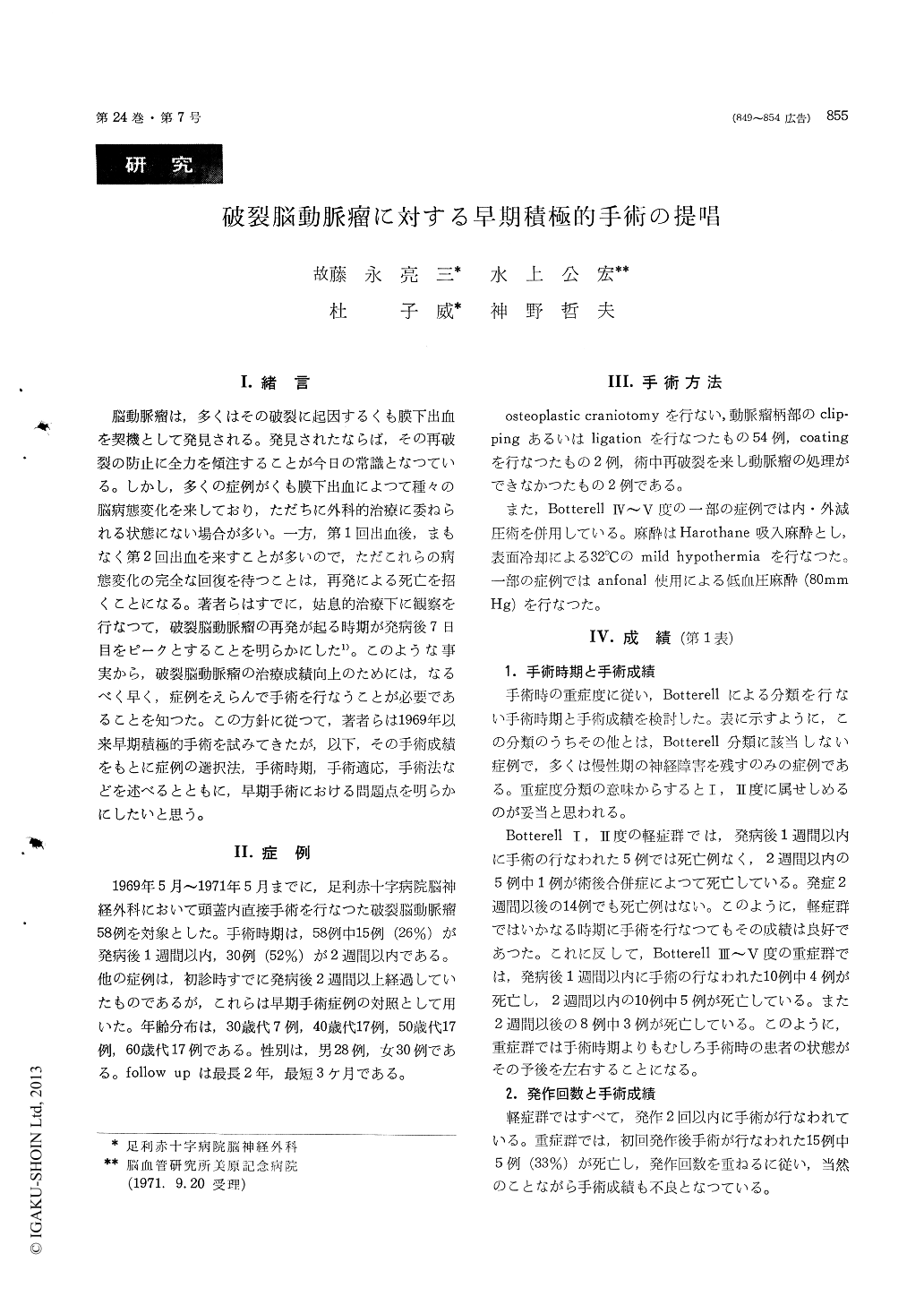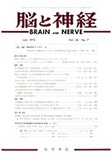Japanese
English
- 有料閲覧
- Abstract 文献概要
- 1ページ目 Look Inside
I.緒言
脳動脈瘤は,多くはその破裂に起因するくも膜下出血を契機として発見される。発見されたならば,その再破裂の防止に全力を傾注することが今日の常識となつている。しかし,多くの症例がくも膜下出血によつて種々の脳病態変化を来しており,ただちに外科的治療に委ねられる状態にない場合が多い。一方,第1回出血後,まもなく第2回出血を来すことが多いので,ただこれらの病態変化の完全な回復を待つことは,再発による死亡を招くことになる。著者らはすでに,姑息的治療下に観察を行なつて,破裂脳動脈瘤の再発が起る時期が発病後7日目をピークとすることを明らかにした1)。このような事実から,破裂脳動脈瘤の治療成績向上のためには,なるべく早く,症例をえらんで手術を行なうことが必要であることを知つた。この方針に従つて,著者らは1969年以来早期積極的手術を試みてきたが,以下,その手術成績をもとに症例の選択法,手術時期,手術適応,手術法などを述べるとともに,早期手術における問題点を明らかにしたいと思う。
Based upon 58 cases of intracranial aneurysmtreated by direct intracranial operation, we proposed a constructive surgery in eary stage and discussed the problems of eary surgery.
1. For patients in good condition (Butterell gr. I-II), the results of surgical treatment in excellent regardless such factors as aneurysm site, age and time interval. This fact indicates that surgery should be done as soon as possible, preferably before 7 days have elapsed.
2. For patients in poor risk condition (Butterell III-V), prompt surgery is indicated before brain stem herniation develop, if a large hematoma is presented. If the patient has not sizable hematoma and/or shows sings of brain stem herniation, a de-layed surgery is advisable until his condition im-proves or stabilizes under constructive conservative management.
3. The use of various surgical adjuvants should be adopted acording to the aneurysm site, vasospasm, the age and condition of the patient.

Copyright © 1972, Igaku-Shoin Ltd. All rights reserved.


